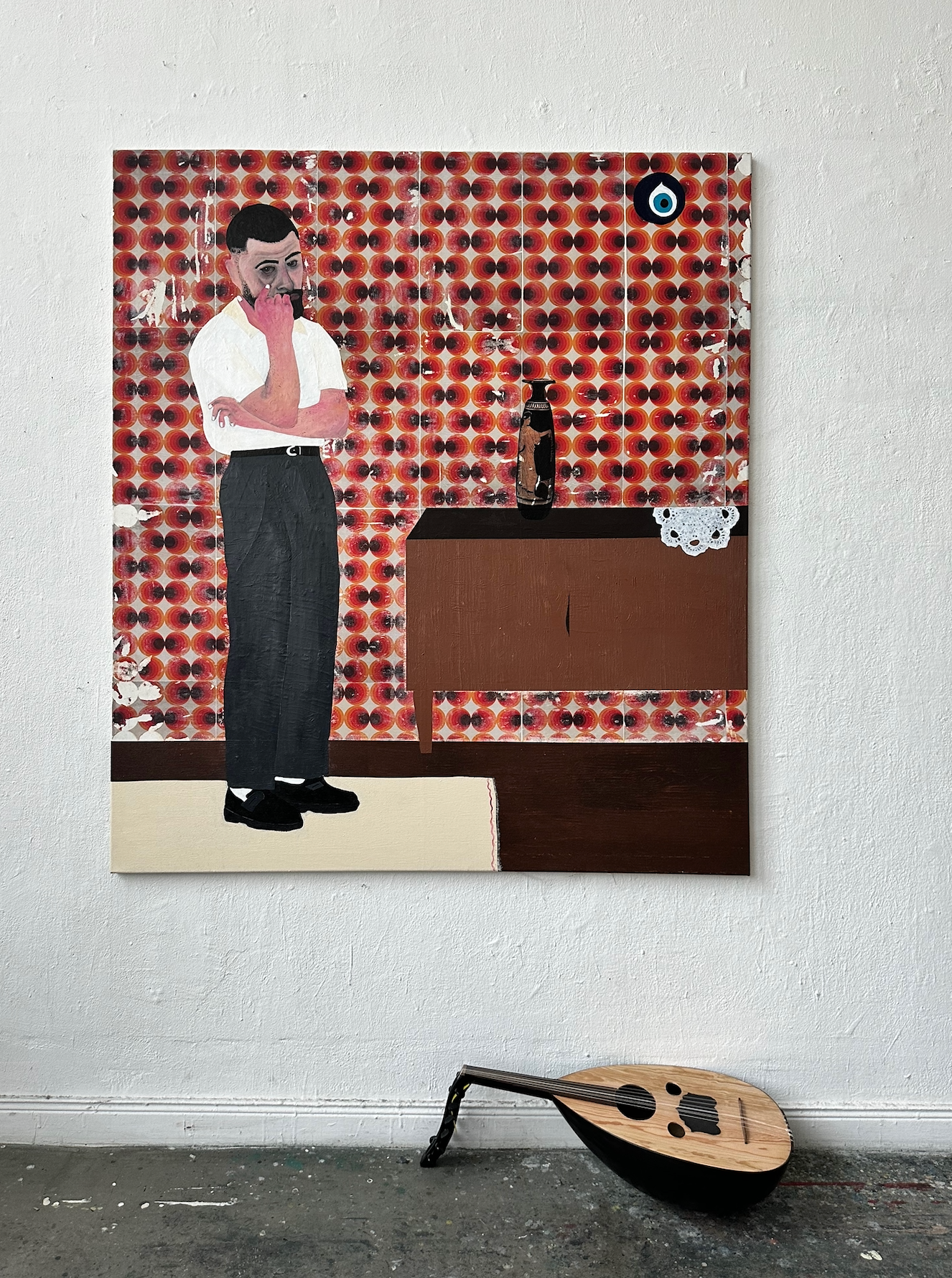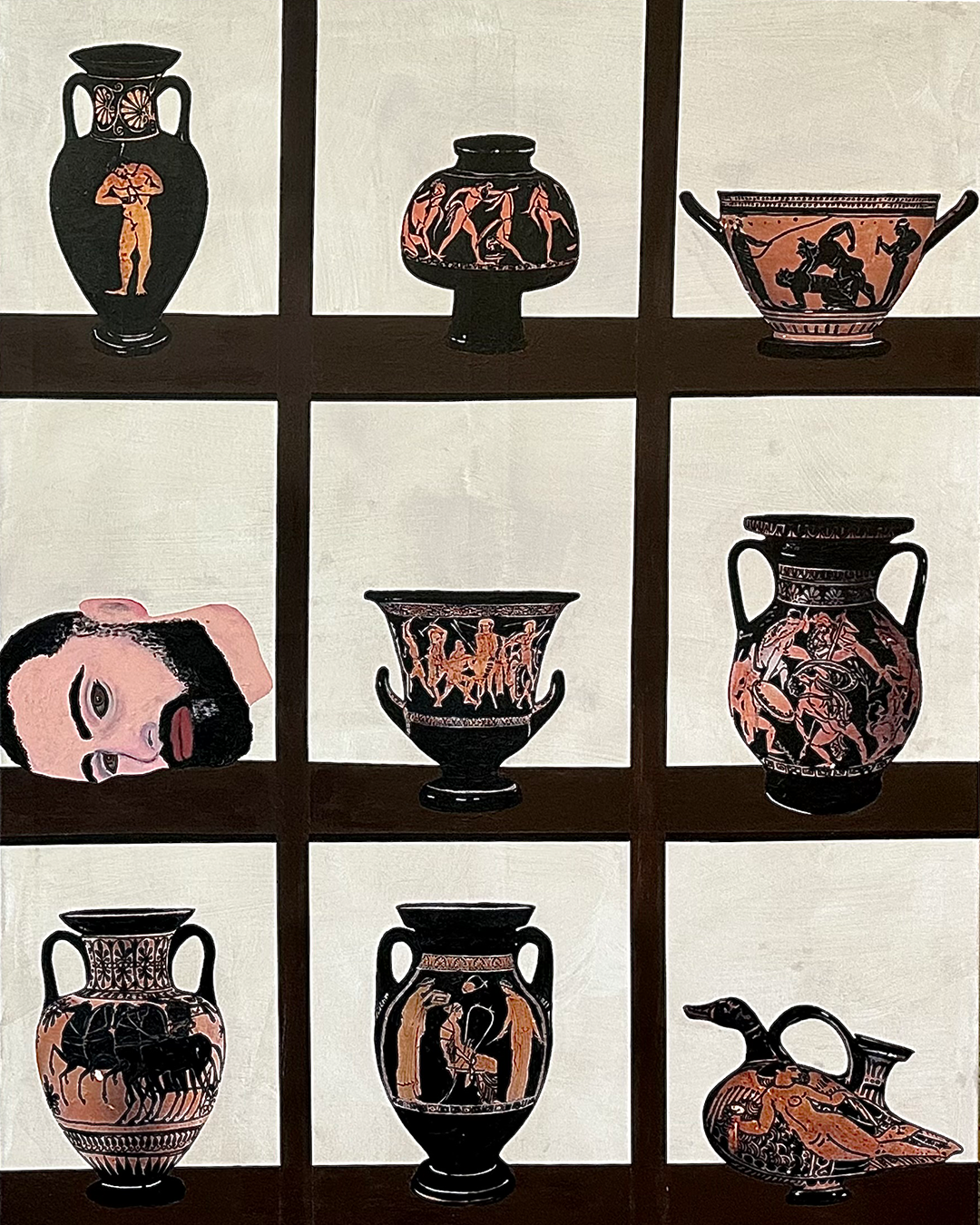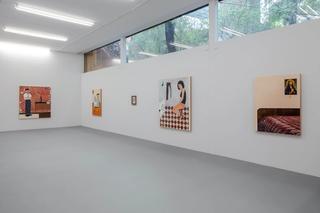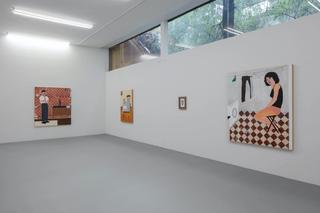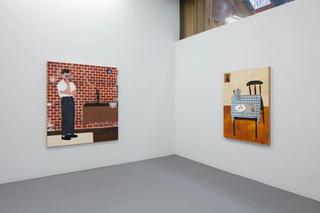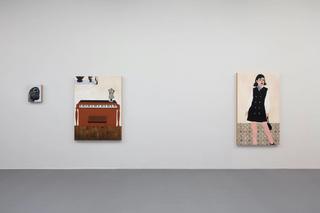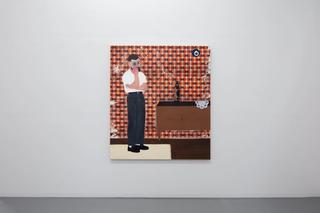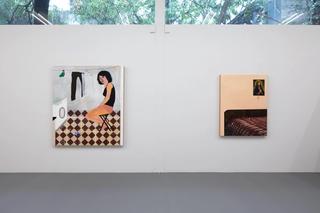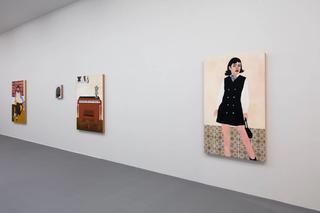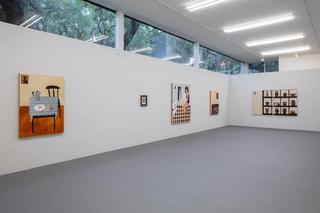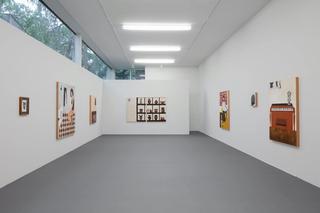It is with great excitement that Labor presents Kiriakos Tompolidis’s first solo exhibition in Mexico with “God Loves You (But Not As Much To Save You)”.
Kiriakos Tompolidis (Essen, 1997) is a painter of Greek origin who works and resides in Berlin.
Tompolidis’s paintings often incorporate references to his Hellenic identity such as classical amphorae painted with the traditional black- and red-figure technique, statues, vases, the Greek protective eye known as ‘mati’, or the blankets that his grandmother weaved to decorate tables.
All of the characters that appear in these works are the artist’s direct relatives and, as if in a role-playing scheme, he artfully dresses his own body or that of his sisters and mother into the clothing of his grandparents. The dynamic of a matriarchal presence subdued by a very dominant masculinity in his family has generated conflicts affecting the artist’s mental health, which Tompolidis externalizes with symbology veiled in Greek mythology. In other instances, he manifests the ancient gods and myths to ironically comment on contemporaneity.
Furthermore, the flattened perspective of his works as well as the figures’ confrontation with the viewer’s gaze evokes Greek theater, both in the aesthetic of two-dimensional staging and in the act of directly addressing an audience with soliloquies and asides. Tompolidis’s characters are figures who are isolated –perhaps helpless and trapped in time– specifically in the 1970s when his grandparents settled in Germany. Inspired by Egon Schiele’s schematic painting and Francis Bacon’s closed cubicles, he also uses the technique, similarly found in the work of Nigerian artist Njideka Akunyili Crosby, of transferring photographic images to his canvases, in which the 'collage' enriches his stroke to create different formal layers onto the surface. In “Patterning,” he incorporates motifs from the wallpaper of his grandparents’ house from the 1970s, or in “Night Out in Greece,” the tile pattern in the foreground is the same that covers the flooring of his grandmother’s church. The way in which Tompolidis paints the texture of wood adds another layer of dynamism to the composition. As in “Maria,” the textured wood characteristic of the headboards from his memory is palpable, along with the icon of the Orthodox religion from his grandmother’s bedroom. In “Lukumia,” he introduces social criticism with the pairing of typical Greek sweets next to a newspaper clipping of an invitation for Greek workers to work for miserable wages in Germany after World War II, while in “Hypocrisy,” he alludes to the evil eye with the protective amulet commonly present in the homes of migrants, and even, on the bows of Mediterranean boats.
Although his work references the aesthetics, themes, and techniques of ancient Greek art, Tompolidis’s paintings were also created from the artist’s contemporary perspective as a means of processing and representing the multigenerational complexities of the immigrant experience and the adaptation to a new culture. In these paintings, he expresses the psychological and emotional struggles faced by previous generations following their arrival to a new country in the post-war period and the subsequent integration of the two Germanys.
The German-Greek artist’s body of work is deeply personal, rooted in his own family’s experiences as well as those of his ancestors, exploring the intricate relationship between his identity and his cultural heritage, that fosters empathy and understanding towards the immigrant experience, and thus, offers a reflection of our present-day global migration crisis.

